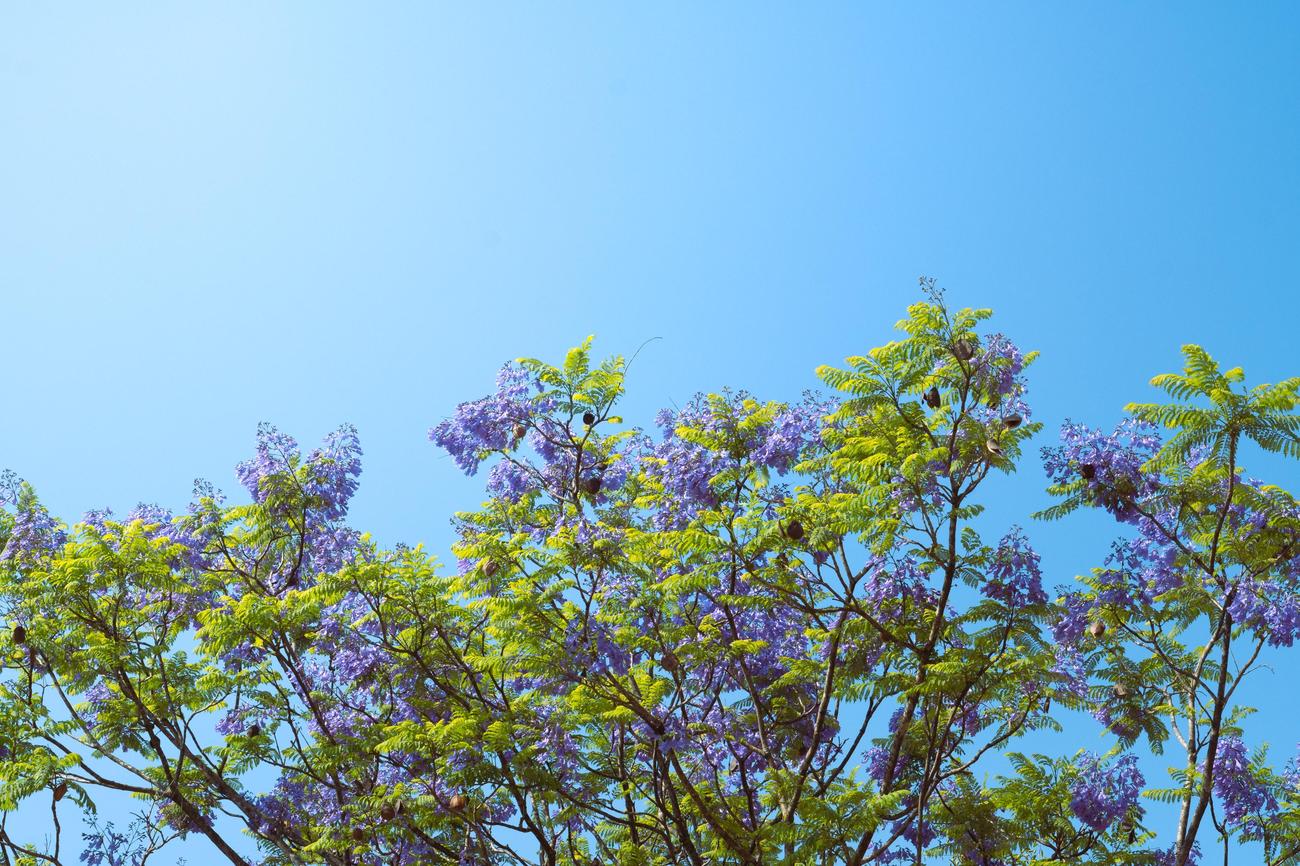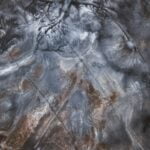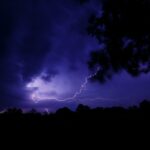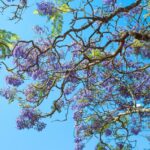Are you ready to dive into the fascinating world of the chaparral biome? In this article, we will explore intriguing facts about this remarkable habitat, focusing on its unique adaptability and biodiversity. From its incredible ability to withstand harsh conditions to its diverse flora and fauna, the chaparral biome never ceases to amaze. Join us as we uncover four interesting facts about this extraordinary ecosystem, shedding light on its importance in our planet’s delicate balance. So, grab your hiking boots and get ready to embark on an exciting journey through the chaparral biome!

Fun Facts About the Chaparral Biome
The chaparral biome, nestled within California, the Mediterranean, and other regions, is brimming with intriguing facts and fascinating features. From its adaptability to its diverse flora and fauna, this unique habitat never ceases to amaze. So, let’s delve into some fun facts about the chaparral biome that will surely captivate your interest!
1. The Perfect Temperature: In the chaparral biome, temperatures tend to hover around 64° F, making it a comfortable and pleasant environment for a wide variety of plants and animals. This mild climate contributes to the biome’s adaptability and its ability to support a rich array of life.
“With its consistently enjoyable temperature, the chaparral biome has created a haven for countless species to thrive.”
2. Night Owls Rule: While most of us are busy sleeping, the chaparral biome comes alive at night. A significant majority of the animals that call this habitat home are nocturnal, adapting to the scorching temperatures of the day by becoming active under the cover of darkness. Just imagine the mysterious and bustling nightlife hidden within this remarkable ecosystem!
“As the sun goes down, an entire world of nocturnal wonders emerges, showcasing the incredible adaptability of the chaparral biome’s inhabitants.”
3. Surviving on a Thimbleful: Water scarcity is a common challenge in the chaparral biome, as the region experiences long periods of drought, particularly during the summer months. To adapt, the plants and animals of the chaparral have honed their ability to survive on minimal water. They’ve become experts at conserving and utilizing every precious drop!
“In this arid landscape, life has found innovative ways to flourish, showcasing nature’s incredible resilience and determination.”
4. Fire: A Catalyst for Growth: Wildfires, although destructive in many ecosystems, actually play a crucial role in the chaparral biome. These fires help with the growth and rejuvenation of plant life. The intense heat and flames trigger the germination of dormant seeds, paving the way for new growth and revitalization. It’s nature’s way of hitting the reset button and ensuring the continuous adaptation and renewal of the chaparral biome.
“Despite its destructive nature, fire in the chaparral biome serves as a catalyst for regeneration, perpetuating the cycle of life and maintaining the ecosystem’s incredible biodiversity.”
5. A Tapestry of Flora and Fauna: The chaparral biome is a tapestry of diverse plant and animal species, each having adapted to thrive in this unique ecosystem. Strolling through its landscapes, you’ll encounter scrub oaks, aromatic sage, resilient yucca plants, and an abundance of fascinating wildlife. From coyotes and lizards to rabbits and birds, the chaparral biome offers a stage for an awe-inspiring array of creatures.
“The chaparral biome is a botanical and zoological wonderland, where countless species have found their niche and contribute to the intricate web of life.”
6. A Multifaceted Landscape: Venture through the chaparral and discover its breathtaking range of landscapes. From dense forests to sprawling shrubs, from sun-drenched plains to picturesque hillsides, and from majestic mountains to winding valleys, the chaparral biome showcases an astonishing variety of terrain. Each unique landscape harbors its own set of characteristics, creating a visual feast for those lucky enough to witness its beauty firsthand.
“The chaparral biome presents a captivating kaleidoscope of terrains, inviting exploration and evoking a deep sense of awe for the wonders of our planet.”
7. The Unison of Deserts and More: The chaparral biome often overlaps with deserts and other arid biomes, creating an intriguing blend of characteristics. It shares some similarities with these neighboring habitats, such as the low precipitation and sparse vegetation. However, the chaparral biome stands out with its unique adaptability, boasting a wider variety of plant and animal life compared to its desert counterparts.
“In the chaparral biome, you’ll witness a harmonious marriage of desert-like features with a rich and vibrant ecosystem, fostering an incredible diversity that defies the aridity of its surroundings.”
8. Challenging Soil Conditions: The soil quality in the chaparral biome can be quite poor. It tends to be rocky and nutrient-deficient, presenting a challenging environment for plants to thrive. However, the remarkable adaptability of chaparral flora has allowed them to utilize every available resource efficiently, demonstrating nature’s ability to flourish against all odds.
“Defying the limitations posed by its soil, the chaparral biome showcases the resilience and resourcefulness of its plant inhabitants, making the most of their rocky environment.”
9. Clear Skies Ahead: Looking up into the sky within the chaparral biome, you’ll notice something peculiar – the absence of clouds. Due to the unique climate conditions and low humidity levels, the chaparral biome experiences clear skies for the majority of the year. This uninterrupted view of the heavens adds to the awe-inspiring experience of exploring this remarkable habitat.
“As you wander through the chaparral, the endless expanse of clear skies above beckons you to contemplate the infinite possibilities of our interconnected world.”
Intriguing, isn’t it? The chaparral biome’s adaptability, biodiversity, and captivating features make it a treasure trove of natural wonders. From the tenacious plants and animals to the breathtaking landscapes, this unique habitat exemplifies the harmonious interplay between resilience and beauty. So, next time you find yourself learning about the wonders of the natural world, be sure to explore the remarkable chaparral biome and its many fun facts!
Fun Facts about the Chaparral Biome
The chaparral biome is home to a diverse array of animals and plants, all uniquely adapted to thrive in its challenging conditions. One fascinating adaptation for animals dwelling in this biome is a varied diet. But how exactly is a varied diet an advantageous adaptation? Well, animals in the chaparral biome face constant changes in resource availability due to the region’s unpredictable weather patterns. By having a varied diet, these animals can adapt and survive even when their usual food sources become scarce. To learn more about how a varied diet benefits animals in the chaparral biome, click here: how is a varied diet an advantageous adaptation for animals dwelling in the chaparral biome.
Talking about the chaparral biome, it’s essential to explore the incredible plants that call this unique ecosystem home. From resilient shrubs to drought-tolerant trees, the plant life in the chaparral biome is truly remarkable. If you’re curious to know more about the fascinating plant species found in this biome, click here: chaparral biome plants.
Located in various parts of the world, the chaparral biome possesses its own distinct characteristics. Its geographical location plays a significant role in shaping its climate, wildlife, and vegetation. If you want to discover more about the specific locations where the chaparral biome can be found, click here: chaparral biome location.
The incredible diversity of animals in the chaparral biome is another notable aspect of this ecosystem. From agile reptiles to swift mammals, these creatures have adapted to survive in the arid conditions of the chaparral. If you’re curious about the fascinating animal species that thrive in this biome, click here: chaparral biome animals.
Lastly, let’s answer the question: What exactly is a chaparral biome? This distinctive biome is characterized by its Mediterranean climate, which includes hot, dry summers and mild, wet winters. With its unique combination of vegetation, climate, and wildlife, the chaparral biome is a captivating ecosystem worth exploring. If you’re interested in learning more about the chaparral biome and its intriguing features, click here: what is a chaparral biome.
Explore the captivating world of the chaparral biome through these links and discover the wonders that await within this extraordinary ecosystem!
4 Interesting Facts about the Chaparral Biome
Fact 1: A Remarkable Climate of Adaptation
In the fascinating world of biomes, the Chaparral stands out with its unique adaptability to a surprisingly moderate rainfall and temperatures that average around 64°F throughout the year. Unlike other biomes that rely on heavy precipitation, the Chaparral receives a modest 10-20 inches of water annually. Such climatic conditions challenge the survival of many organisms, but the Chaparral inhabitants have evolved incredible strategies to thrive in this environment. Let’s dive deeper into this extraordinary adaptation.
“The Chaparral Biome’s remarkable climate has forged a diverse range of flora and fauna, each showcasing ingenious ways to cope with scarce water resources and fluctuating temperatures.”
Fact 2: Mastering Survival through Water Conservation
Imagine being a plant in the Chaparral, where water scarcity is a relentless adversary. To overcome this challenge, the plants have evolved a variety of remarkable adaptations. One of their tactics is to grow leaves that are thick and leathery, which enables them to retain water for longer periods. These resilient leaves function as natural water storage units, minimizing the need for constant water intake. This adaptation allows the Chaparral plants to flourish even in the face of relentless dry spells.
“In the Chaparral Biome, plants have unlocked the secret of optimum water conservation, employing their thick and tough leaves as remarkable natural reservoirs.”
Fact 3: A Fiery Rejuvenation: The Role of Wildfires
Wildfires in the Chaparral Biome may seem destructive, but they actually serve a vital purpose in maintaining the ecosystem’s health. These flames act as nature’s rejuvenating force, clearing away the accumulated dead vegetation and facilitating the regeneration of new life. Through the process of fire-dependent germination, certain plant species in the Chaparral require the heat of wildfires to trigger their seeds’ growth. These resilient plants have adapted to the fiery ecocycle, demonstrating nature’s extraordinary ability to bounce back from destruction.
“In the Chaparral Biome, wildfires aren’t just destructive forces; they are the powerful catalysts that breathe new life and vitality into this unique ecosystem.”
Fact 4: Threats and Conservation Efforts
While the Chaparral Biome has stood strong for centuries, it faces a host of contemporary threats. Urbanization, climate change, and the invasion of non-native species pose significant risks to this delicate habitat. Increased human development encroaches upon the Chaparral, fragmenting its once sprawling landscapes. Climate change exacerbates existing challenges, intensifying droughts and affecting the overall balance within the biome. Invasive species disrupt the delicate harmony of the ecosystem, threatening native plants and animals. To safeguard the Chaparral’s unique biodiversity, conservation measures must be implemented. These efforts involve managing and preventing wildfires, preserving crucial habitats, and raising awareness to foster responsible environmental practices.
“The threats faced by the Chaparral Biome call for urgent and effective conservation measures. By managing wildfires, preserving habitats, and combating invasive species, we can secure this remarkable ecosystem’s future for generations to come.”
Table: Threats and Conservation Measures
| Threats to the Chaparral Biome | Conservation Measures |
|---|---|
| Urbanization | Implement land-use policies that prioritize habitat preservation. |
| Climate Change | Reduce greenhouse gas emissions and support climate adaptation strategies. |
| Invasive Species | Monitor and manage non-native species to prevent their spread and minimize their impact. |
“Threats loom over the precious Chaparral Biome, but through vigilant conservation efforts, we can protect its extraordinary biodiversity and ensure a harmonious future.”
Intrigued by the Chaparral Biome’s unique adaptability and biodiversity? As you explore further, you’ll discover even more captivating facts that showcase the astonishing resilience of this remarkable habitat.
3 Interesting Facts about Chaparral Biome
The Chaparral biome is a captivating habitat that never fails to surprise with its unique characteristics. Whether it’s the adaptability of its flora and fauna or the remarkable role it plays in our planet’s ecosystem, there’s much to discover about this remarkable biome. In this article, we’ll explore three intriguing facts that shed light on the Chaparral’s adaptability and biodiversity.
Fact 1: The Chaparral Biome’s Incredible Water Balance
One of the most astonishing aspects of the Chaparral biome is its ability to thrive with minimal water. With an average of only 10-20 inches of rainfall per year, it’s a real testament to nature’s resilience. The plants in the Chaparral have evolved unique strategies to adapt to this aridity. For example, many of them have thick, leathery leaves that reduce water loss through transpiration. These adaptations enable them to conserve water effectively, making the most out of every precious drop.
The plants in the Chaparral biome have truly mastered the art of water conservation, displaying a remarkable resilience in the face of scarcity.
Fact 2: Nature’s Pyrotechnics: Wildfires as Catalysts for Life
Wildfires are a common occurrence in the Chaparral biome, and while they may seem terrifying, they actually play a crucial role in the ecosystem’s health. These fires act as catalysts for regeneration, clearing away dead vegetation and promoting the growth of new life. The heat from the flames opens up the seedpods of certain plants, allowing them to germinate and establish new growth. It’s a beautiful cycle of destruction and renewal that exemplifies nature’s resilience and adaptability.
In the Chaparral biome, fire is not the enemy but rather a vital force that ushers in new beginnings and rejuvenates the landscape.
Fact 3: The Fragile Beauty of the Chaparral Biome
While the Chaparral biome may appear tough and rugged, it is also incredibly delicate and vulnerable. Urbanization, climate change, and invasive species pose significant threats to its biodiversity. As human development encroaches upon these habitats, fragmentation occurs, disrupting the interconnectedness of the ecosystem. Climate change can exacerbate aridity, making it even more challenging for the unique flora and fauna to survive. Additionally, invasive species can disrupt the delicate balance of the Chaparral, outcompeting native plants and animals.
The Chaparral biome’s beauty and adaptability can only be preserved through our collective efforts in conservation and sustainable practices.
Conclusion
From its incredible water balance and adaptability to the role of wildfires in rejuvenating the landscape, the Chaparral biome never ceases to amaze. By understanding these three intriguing facts, we gain a deeper appreciation for the uniqueness and resilience of this remarkable habitat. Let us work together to protect and preserve the Chaparral biome, ensuring its beauty and biodiversity endure for generations to come.
The Chaparral biome’s ability to adapt, regeneration through fire, and vulnerability to human activities all contribute to its captivating nature and significance.
Chaparral Biome: A Closer Look at Its Unique Characteristics
[youtube v=”ARl_7pbjN8g”]
Mediterranean Climate: Shaping the Chaparral Biome
The Chaparral Biome is a heathland or shrubland that owes its existence to the Mediterranean climate. This unique environment is primarily found in the northern part of the Baja California peninsula in Mexico, as well as in California, USA. The Mediterranean climate of the Chaparral Biome is characterized by hot, dry summers and wet winters, making it a challenging but adaptable ecosystem.
“The Mediterranean climate plays a crucial role in shaping the Chaparral Biome, with its distinct seasons of hot summers and wet winters.”
Resilient Plant Life in the Chaparral Biome
One of the most fascinating aspects of the Chaparral Biome is the plant life that thrives within it. The plants in this biome exhibit remarkable adaptations to survive the harsh conditions, such as the presence of hard, waxy, and evergreen leaves that can tolerate summer droughts. These plants have evolved unique strategies to conserve water and withstand prolonged periods of dryness.
“The plants in the Chaparral Biome display a remarkable resilience, with their hardy evergreen leaves that are well-equipped to withstand extended dry periods.”
California’s Connection to the Chaparral Biome
In California, the Chaparral Biome covers approximately 5% of the state, with around 3.5% connected to the Mediterranean shrubland. This region is home to a rich diversity of flora and fauna, making it an important area for ecological preservation. The name “Chaparral” itself is derived from the Spanish word “caparo,” which means scrub oak, reflecting the influence of Spanish settlers on the region’s terminology.
“California is closely intertwined with the Chaparral Biome, as it encompasses a significant portion of the state, showcasing its rich natural beauty.”
Infrequent Fires and Drought-Tolerant Plants
A notable characteristic of the Chaparral Biome is the occurrence of infrequent fires, which have a profound impact on maintaining its ecological balance. In its natural state, the Chaparral Biome experiences fire intervals ranging from 10 to 15 years or even more than 100 years. Mature chaparral plants, known for their highly flammable nature, play a crucial role in this cycle. Despite their small and hard leaves, these plants are drought-tolerant and non-deciduous, allowing them to withstand the arid conditions.
“The infrequent occurrence of fires is a defining feature of the Chaparral Biome, and the mature chaparral plants are adapted to these unique fire intervals.”
A Dynamic Cycle of Life After Rainfall
After the first rains in the Chaparral Biome, non-woody annual plants with soft leaves dominate the landscape. These plants, often referred to as fire followers, thrive during the subsequent summer dry period before ultimately perishing. The cycle repeats as the region experiences rainfall once again. The Chaparral Biome’s resilience and ability to regenerate after each dry period are remarkable.
“The cycle of life in the Chaparral Biome after the first rains is a testament to its dynamic nature, with non-woody annual plants seizing the opportunity to thrive.”
Chaparral Biomes Around the World
While the Chaparral Biome is known for its presence in Mexico and California, similar ecosystems can also be found in other parts of the world. These include the central Chilean region called madhural, the Mediterranean Basin’s Maki, Australia’s western and southern regions known as huangdan, and the South African Cape region named finbos. Despite their geographical separation, these areas share similar plant characteristics, showcasing the adaptability of nature.
“The Chaparral Biome is not limited to Mexico and California but can be observed in various regions worldwide, highlighting the global significance of this unique ecosystem.”
Remarkable Plant Diversity in the Chaparral Biome
Occupying approximately 20% of the world’s plant diversity, the Chaparral Biome is a botanical treasure trove. In California specifically, the dominant plants found in the Chaparral Biome include quercus agrifolia (coastal sagebrush), blue oak, canyon live oak, and scrub oak. This rich variety of plant life contributes to the overall biodiversity of the Chaparral Biome.
“The remarkable plant diversity found in the Chaparral Biome makes it a vital contributor to the overall wealth of global flora.”
In conclusion, the Chaparral Biome is a remarkable ecosystem shaped by the Mediterranean climate and characterized by its unique adaptations to water scarcity and intermittent fires. While it faces threats from urbanization, climate change, and invasive species, the conservation of this biome is essential to protect its exceptional biodiversity. The Chaparral Biome serves as a reminder of nature’s ability to thrive in challenging environments and its importance in maintaining ecological balance.

FAQ
Question 1
What is the average temperature in the chaparral biome?
Answer 1
The average temperature in the chaparral biome is 64° F.
Question 2
Do animals in the chaparral biome primarily live during the day or night?
Answer 2
Majority of the animals in the chaparral biome are nocturnal.
Question 3
How do animals in the chaparral biome cope with the scarcity of water?
Answer 3
Animals in the chaparral biome have adapted to survive on very little water.
Question 4
What is a common weather phenomenon experienced in the chaparral biome during summer?
Answer 4
There is usually a drought during the summer months in the chaparral biome.
Question 5
Where can the chaparral biome be found geographically?
Answer 5
The chaparral biome is found in areas such as California, the Mediterranean, and more.
Question 6
What role do wildfires play in the chaparral biome?
Answer 6
Wildfires are common in the chaparral biome and help with growth.
Question 7
Which plants are commonly found in the chaparral biome?
Answer 7
Plants in the chaparral biome include scrub oaks, sage, and yucca.
Question 8
Which animals inhabit the chaparral biome?
Answer 8
Animals in the chaparral biome include coyotes, lizards, and rabbits.
Question 9
What are the different landscapes found in the chaparral biome?
Answer 9
The chaparral biome covers a wide range of landscapes such as forests, shrubs, plains, hillsides, and mountains.
Question 10
What other types of biomes does the chaparral biome overlap with?
Answer 10
The chaparral biome tends to overlap with deserts and other arid biomes.
- Sept 31 Myth: Unveiling Calendar Secrets - March 18, 2025
- How Long & Till December 18, 2025: Accurate Countdown Guide - March 18, 2025
- Discover Japanese Artists: A Complete History - March 18, 2025
















